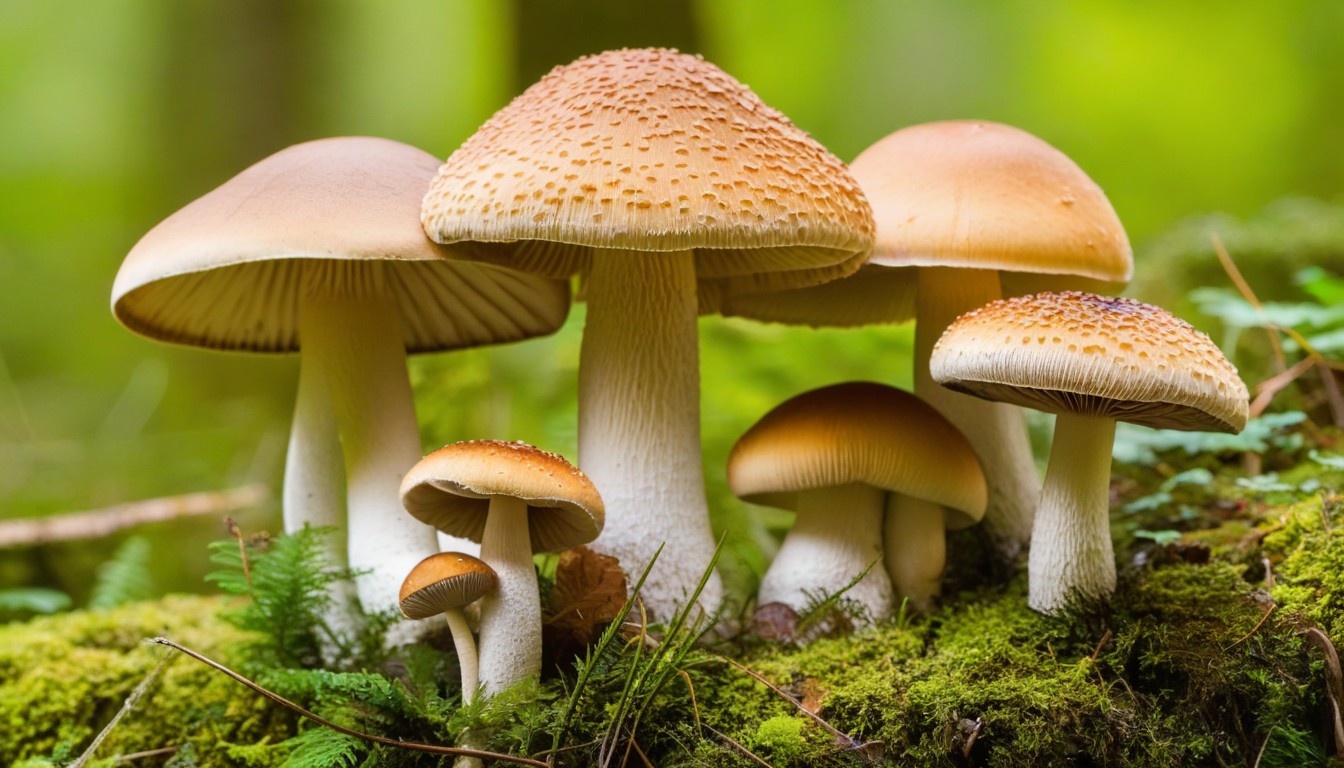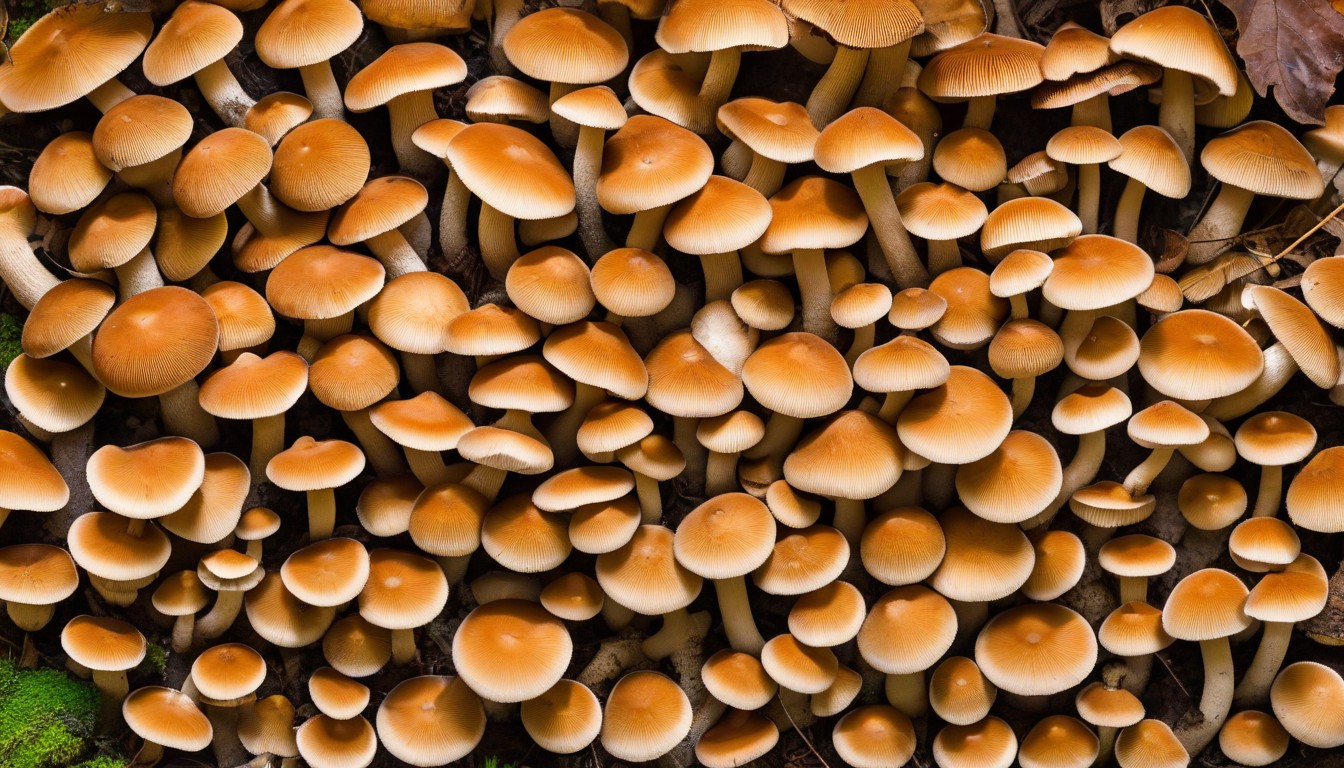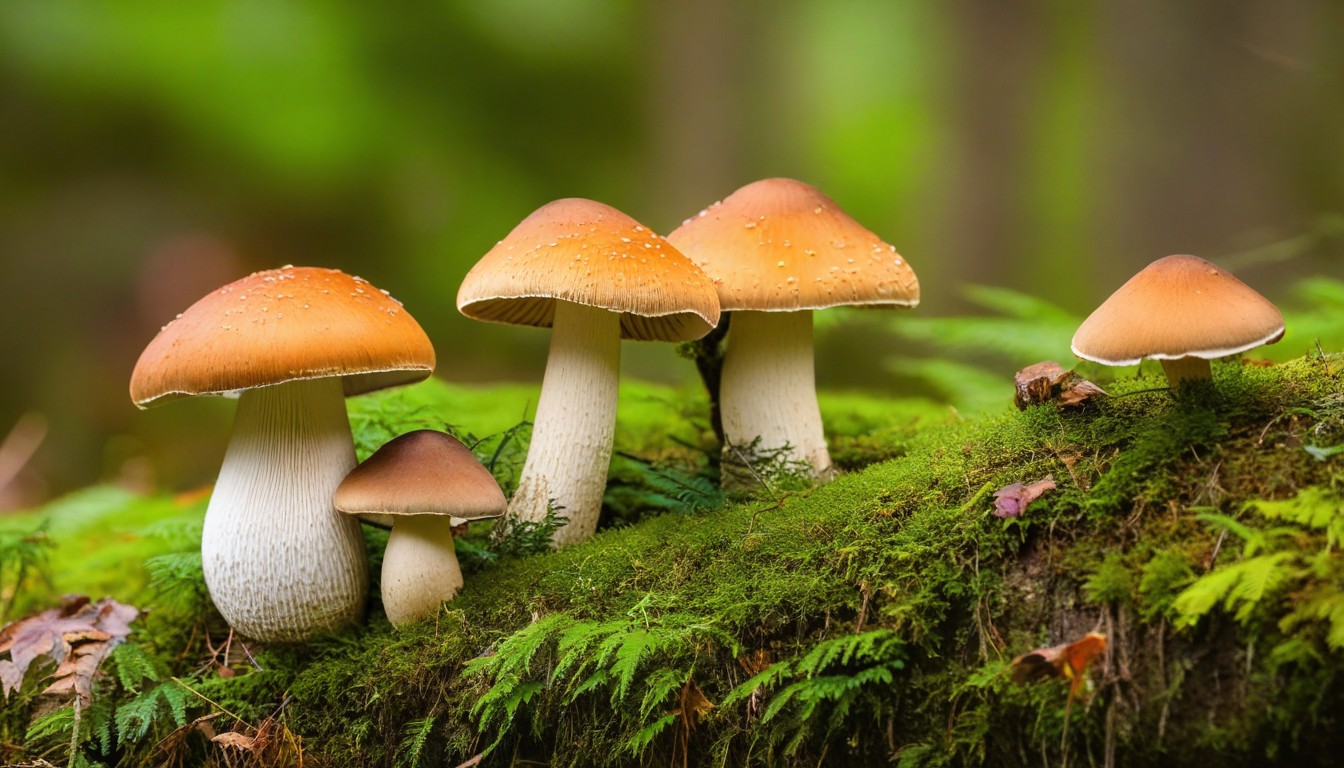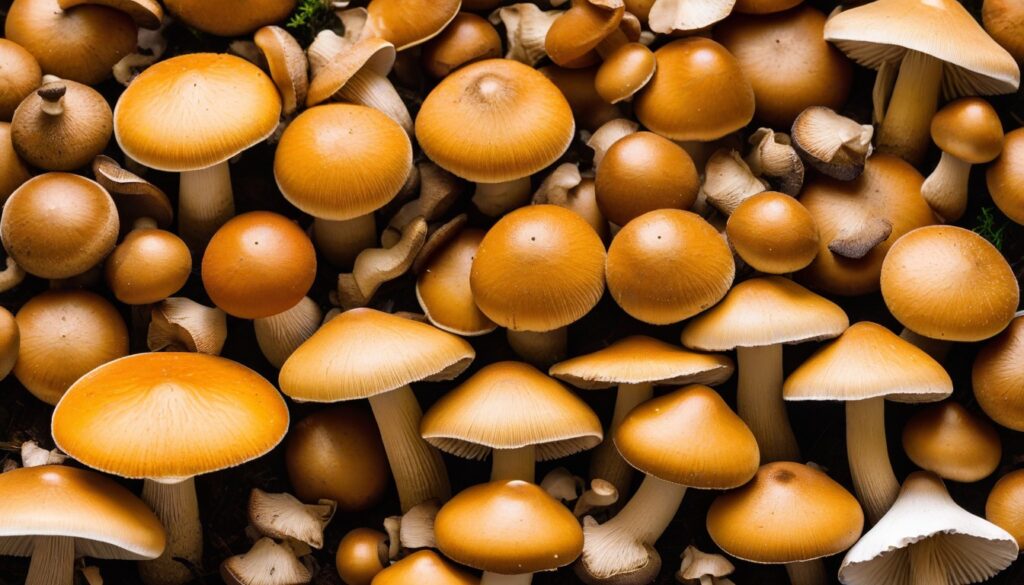The wilds of Alabama are home to an abundance of edible mushrooms, renowned for their unique flavors and numerous health benefits. Whether you’re a seasoned forager or new to the world of mushroom hunting, Alabama’s forests and fields offer an array of culinary treasures waiting to be discovered.
Key Takeaways
- Alabama’s wilds are a great source of delicious and nutritious edible mushrooms.
- Foraging for edible mushrooms requires proper identification and safety precautions.
- There are several common edible mushroom species that grow in Alabama, each with their own distinctive features and habitats.
- Foraging for edible mushrooms can have cultural and historical significance, as well as being an excellent outdoor hobby.
- It is essential to practice conservation and sustainable practices when foraging to protect and preserve these delicate ecosystems.
Importance of Proper Mushroom Identification
Foraging for mushrooms can be a fun and rewarding activity, but it comes with some risks. Some wild mushrooms can be dangerous or even deadly if ingested, making proper identification essential. Without proper mushroom identification, it is difficult to determine which mushrooms are safe to eat.
The key to correctly identifying edible mushrooms lies in understanding their unique characteristics. It is essential to examine the color, shape, size, and texture of the cap, gills, stem, and other features of the mushroom. Consulting a reliable field guide or seeking assistance from an experienced forager can also play a vital role in ensuring accurate identification.
In some cases, mushrooms may look similar to each other, making it challenging to distinguish one from another. This is where a closer examination and knowledge of key features can prevent confusion. For instance, poisonous mushrooms like the deadly galerina have similar characteristics to some edible mushrooms, such as the honey mushroom, making identification essential.
Whether you are a seasoned forager or a beginner, learning how to identify mushrooms is crucial for your safety. Proper mushroom identification can help you avoid poisonous species and guarantee a successful and fulfilling foraging experience.
A Beginner’s Guide to Foraging Edible Mushrooms in Alabama
Foraging for edible mushrooms in Alabama is an exciting and rewarding experience for beginners and experts alike. Before setting out on your adventure, it’s essential to learn the basics to ensure a safe and successful foraging trip. Here are some essential tips and techniques for novice mushroom foragers in Alabama:
Best locations
Alabama is home to a vast wilderness area teeming with native species of edible mushrooms. Ideal locations for mushroom foraging include hardwood forests and grassy meadows with moist soil. Some of the best areas to forage for edible mushrooms in Alabama include Talladega National Forest, Bankhead National Forest, and Sipsey Wilderness.
Seasons
The best time to forage for mushrooms in Alabama is in the late summer and early fall when there is plenty of moisture. You can find a wide variety of edible mushrooms in spring and fall, including morels, chanterelles, and oyster mushrooms.
Tools
When foraging for mushrooms, you’ll need a few basic tools such as a mushroom knife, a basket or a container, a pair of gloves, and a field guide. A mushroom knife comes equipped with a brush and a sharp blade to help you collect and clean the mushrooms with ease.
Safety
Proper identification of mushrooms is crucial to avoid consuming poisonous varieties accidentally. It’s wise to have a knowledgeable and experienced companion to teach you how to recognize safe and poisonous species. Additionally, avoid picking mushrooms that are close to contaminated sources, like roadsides or industrial sites. Wear appropriate clothing, including long pants and boots, to protect yourself from insects, snakes, and other dangers that may be present.
By following these tips, you’ll be on your way to a successful mushroom foraging trip in Alabama. Remember to leave nature and its inhabitants undisturbed; only collect mushrooms that you can identify and will consume. Explore the diverse variety of edible mushrooms that Alabama has to offer, and delight your taste buds with local delicacies.
Common Edible Mushrooms in Alabama
Whether you’re a seasoned mushroom forager or new to the experience, the following mushrooms can be found throughout Alabama’s wilds and are safe to eat.
|
Mushroom |
Distinctive features |
Habitat |
Preferred growing conditions |
|---|---|---|---|
|
Chanterelle |
Meat-like texture; apricot or yellow color with wavy, trumpet-shaped cap |
Deciduous or coniferous forests, often near oak or pine trees |
Summer to fall; moist soil and moderate sunlight |
|
Morel |
Honeycomb pattern over the cone-shaped cap |
Open woodland areas, often near ash or elm trees |
Spring to early summer; warm days and cool nights with moist soil |
|
Oyster |
Shell-shaped cap with wide, thin fruiting body; typically gray, yellow, or brown in color |
Grows on dead or dying hardwood trees |
Year-round in most habitats; prefers high humidity and moderate temperatures |
|
Button |
Small, white caps that can be easily mistaken for poisonous mushrooms; can be dried and stored for later use |
Grows in grassy areas and fields |
Spring to fall; requires abundant moisture |
|
Shiitake |
Brown, umbrella-shaped caps with white gills |
Grows on hardwood trees and logs |
Year-round in most habitats; prefers high humidity and mild temperatures |
Keep in mind that these mushrooms should only be consumed after proper identification and verification with an expert in the field. Happy foraging!
Safety Precautions and Poisonous Mushrooms to Avoid

Foraging for edible mushrooms in the wild can be an exciting and rewarding experience. However, it is crucial to follow proper safety precautions and to avoid poisonous mushrooms to protect your health and well-being.
First and foremost, it is essential to properly identify mushrooms before consuming them. Poisonous mushrooms can look similar to edible ones, so it is crucial to be thorough in your identification process. Remember to examine the cap, gills, stem, and base of the mushroom and use a field guide for reference.
Even with correct identification, it is still possible to fall ill from eating mushrooms due to individual reactions. To minimize the risk, it is recommended that you consume small portions of any new mushroom variety and wait 24 hours before eating more to monitor any adverse reactions.
Another precaution is to avoid foraging in polluted areas, such as near roadsides or areas with agricultural runoff. These toxins can contaminate the mushrooms and pose a risk to human health.
Poisonous Mushrooms to Avoid
|
Mushroom Name |
Description |
|---|---|
|
Amanita phalloides |
Also known as the death cap, this mushroom is deadly if ingested and resembles edible varieties. |
|
Galerina marginata |
Also known as the deadly Galerina, this mushroom can cause liver failure and is often mistaken for edible varieties. |
|
Conocybe filaris |
This mushroom contains the same toxin as the death cap and can be fatal if ingested. |
By taking necessary safety precautions and avoiding poisonous mushrooms, you can enjoy a safe and delightful foraging experience for edible mushrooms in the wilds of Alabama.
Cooking and Preserving Edible Mushrooms

After a successful mushroom foraging trip, the next step is to transform your harvest into delicious meals and prolong its shelf life. Cooking edible mushrooms not only brings out their unique flavors and textures but also enhances their nutritional value. It’s important to note that different mushroom species require varying cooking methods and times.
One popular cooking technique for most edible mushrooms is sautéing. Heat up some oil or butter, add the mushrooms, and cook until they are browned and tender. You can also roast or grill mushrooms for a more intense flavor and aroma. Edible mushrooms make great additions to soups, stews, and pasta dishes.
Preserving Edible Mushrooms
If you don’t plan on using your entire mushroom harvest immediately, there are various preservation methods to store them for future use. Drying is a common way to preserve mushrooms, as it removes most of the moisture content and prevents spoilage. To dry mushrooms, clean them thoroughly, slice them thin and evenly, and place them on a baking sheet. Set the oven to low heat, and let your mushrooms dry for several hours. You can also use a food dehydrator to dry them.
Canning is another preservation technique that can extend the shelf life of your mushroom harvest. Whether pickling or pressure-canning, proper canning practices must be followed to ensure safety.
A Simple Mushroom Recipe to Try
“Mushroom and garlic risotto”
|
Ingredients |
Instructions |
|---|---|
|
1 cup Arborio rice |
1. Rinse the Arborio rice and set aside. |
|
4 cups chicken or vegetable broth |
2. Bring the broth to a simmer and maintain a low heat. |
|
8 oz. fresh mushrooms (sliced) |
3. In a separate pan, sauté the mushrooms until browned and set aside. |
|
2 cloves garlic (minced) |
4. In the same pan, sauté the garlic with some butter or oil until fragrant. |
|
1/2 cup white wine |
5. Add the Arborio rice to the garlic and stir until coated. Add the white wine and stir until it has been absorbed. |
|
1/2 cup grated parmesan cheese |
6. Add a ladleful of broth to the rice mixture and stir until absorbed. Continue to add the broth, one ladleful at a time, stirring constantly until the rice is cooked through and has a creamy texture (this takes about 20 minutes). |
|
2 tbsp butter |
7. Stir in the sautéed mushrooms, butter, and parmesan cheese. Serve hot. |
Preserving and cooking edible mushrooms allow you to enjoy their flavors and health benefits long after the foraging season has ended. Experiment with different recipes and preservation methods to make the most of your foraged harvest.
Health Benefits of Edible Mushrooms

Edible mushrooms offer numerous health benefits that make them not only a desirable culinary ingredient but also a functional food.
|
Nutrient |
Health Benefits |
|---|---|
|
Vitamin D |
Supports bone health and boosts the immune system. Mushrooms are one of the few foods that naturally contain vitamin D. |
|
Potassium |
Helps regulate blood pressure and reduce the risk of heart disease. |
|
Fiber |
Supports digestive health and lowers the risk of colon cancer. |
|
Vitamin B12 |
Essential for nerve function and the formation of red blood cells. |
|
Antioxidants |
Helps protect against cellular damage and may lower the risk of chronic diseases such as cancer. |
Consuming edible mushrooms has also been linked to improved cognitive function, lower inflammation levels, and reduced risk of obesity and type 2 diabetes.
When foraging for edible mushrooms, it is essential to properly identify them to avoid consuming any toxic species. However, with the right knowledge and precautions, adding wild mushrooms to your diet can offer a range of health benefits.
Cultural Significance and Historical Uses of Edible Mushrooms in Alabama
Mushrooms have played a significant role in the culture and traditions of Alabama’s indigenous peoples, who have been foraging and utilizing these fungi for centuries. Native American tribes, including the Cherokee and Creek, have incorporated wild mushrooms into their diets, medicines, and spiritual practices.
Some edible mushrooms have also held historical significance in Alabama. For example, the “Hen of the Woods” (Grifola frondosa) was once believed to have aided in the recovery of a wounded Civil War soldier. More recently, the “Crimson Waxcap” (Hygrocybe punicea) has become a symbol of conservation efforts to protect local wildlife habitats.
Furthermore, edible mushrooms have been used for medicinal purposes in Alabama’s folk remedies. The “Turkey Tail” (Trametes versicolor) and the “Reishi” (Ganoderma lucidum) are examples of mushrooms with reputed medicinal benefits, such as anti-inflammatory and immune-boosting properties.
“The traditional uses of edible mushrooms in Alabama reflect a deep understanding and appreciation of their exceptional qualities and have contributed to the cultural heritage of the region.”
Today, foraging for edible mushrooms in Alabama’s wilds continues to draw enthusiasts from all walks of life, celebrating the rich cultural and historical significance of these remarkable fungi.
Edible Mushroom Conservation and Sustainability in Alabama

Foraging for edible mushrooms has become increasingly popular in recent years, leading to concerns regarding conservation and sustainability. Alabama boasts a diverse variety of edible mushroom species, and it is essential to protect and preserve them for future generations.
Efforts to conserve and sustainably manage edible mushrooms in Alabama are ongoing. One initiative involves educating the public about responsible foraging practices, such as only harvesting mature mushrooms and leaving behind small or damaged specimens.
Moreover, conservationists are working to preserve vital habitats and ecosystems where mushrooms grow by advocating for land conservation and sustainable forestry practices that prioritize biodiversity. Additionally, initiatives such as cultivating mushrooms in controlled environments are being explored to reduce foraging pressure on wild populations.
Conservation and sustainability practices must be ingrained in all aspects of mushroom foraging, including cooking and consumption. Choosing to purchase mushrooms from sustainable sources can help reduce pressure on wild populations and support local farmers who prioritize sustainable practices.
It is up to us to ensure that we can enjoy the unique flavors of Alabama’s edible mushrooms for years to come by acting responsibly and sustainably.
Culinary Events and Community Organizations for Mushroom Enthusiasts in Alabama
Alabama’s mushroom community is thriving, with various culinary events, workshops, and community organizations dedicated to exploring the world of edible mushrooms. These events and organizations offer opportunities for mushroom enthusiasts to learn, connect, and discover new culinary experiences.
Culinary Events
The food industry in Alabama is booming, and edible mushrooms are making their way onto local menus. Culinary events such as the annual Alabama Chanterelle Cook-off showcase a variety of local wild mushrooms and offer a chance to taste unique mushroom-based dishes. Mushroom enthusiasts can also attend mushroom-themed dinners at local restaurants or participate in cooking workshops to learn how to prepare mushrooms in new and exciting ways.
Community Organizations
Joining a community organization is an excellent way for mushroom enthusiasts to connect with like-minded individuals and expand their knowledge. The Alabama Mushroom Society is a community organization for mushroom lovers to learn about mushrooms, share experiences, and participate in mushroom-related activities. The North American Mycological Association is another organization that offers information, resources, and events for mushroom enthusiasts across North America.
Workshops
Workshops offer a more hands-on experience for mushroom enthusiasts to learn about edible mushrooms. These workshops cover a range of topics, including mushroom identification, foraging techniques, and cooking methods. Workshops are often led by experts in the mushroom industry and offer a chance to learn new skills and gain valuable knowledge.
The Bottom Line
Culinary events, community organizations, and workshops provide a unique opportunity for mushroom enthusiasts to connect, learn, and explore the world of edible mushrooms in Alabama. Whether you’re a seasoned forager or a curious beginner, these events and organizations offer something for everyone.
Conclusion
Foraging for edible mushrooms in Alabama’s wilds can be an exciting and rewarding experience if done safely and sustainably. By properly identifying the mushrooms, being aware of the potential risks, and embracing conservation practices, you can enjoy the unique flavors and health benefits of local edible mushrooms.
Remember to always take safety precautions and avoid consuming any mushrooms without proper identification. If in doubt, seek help from a local expert or community organization.
Engage with the vibrant mushroom community in Alabama by attending culinary events and workshops or joining community organizations. This will allow you to expand your knowledge, connect with like-minded individuals, and explore new experiences.
So, what are you waiting for? Get ready to explore the bountiful world of edible mushrooms in Alabama’s wilds!
FAQ
What are edible mushrooms?
Edible mushrooms are fungi that are safe for human consumption and have culinary value. They can be found in various habitats and are sought after for their unique flavors and nutritional benefits.
How can I properly identify edible mushrooms?
Proper identification of edible mushrooms is crucial for safety. Look for key characteristics such as cap shape, color, spore print color, gill or pore structure, and stem features. It is recommended to consult field guides or seek guidance from experienced foragers.
Where can I forage for edible mushrooms in Alabama?
Alabama offers a diverse range of habitats suitable for mushroom foraging, including forests, meadows, and wetlands. Parks, nature reserves, and private properties with permission are good places to start. Always respect private property and obtain any necessary permits.
What equipment do I need for mushroom foraging?
For mushroom foraging, it is advisable to carry a basket or mesh bag to collect mushrooms without damaging them. Other useful tools include a small knife for cutting mushrooms, a field guide for reference, and a camera for documentation.
Are there any poisonous mushrooms in Alabama?
Yes, Alabama is home to several poisonous mushrooms that can cause illness or even death if consumed. It is essential to educate yourself on the toxic species and avoid consuming any mushrooms that you are not completely sure of.
How should I cook and preserve edible mushrooms?
Edible mushrooms can be cooked in numerous ways, including sautéing, grilling, roasting, or incorporating them into soups, stews, or stir-fries. To preserve mushrooms, you can dry them, pickle them, or freeze them for later use.
What are the health benefits of edible mushrooms?
Edible mushrooms are rich in essential nutrients, vitamins, and minerals. They are known to boost the immune system, improve digestion, promote cardiovascular health, and possess antimicrobial and antioxidant properties.
What are the cultural and historical uses of edible mushrooms in Alabama?
Edible mushrooms have played a significant role in Alabama’s culture and history. They have been used in traditional recipes, medicinal remedies, and folklore. They hold symbolic importance in certain festivals and are considered a valuable natural resource.
How can I contribute to the conservation and sustainability of edible mushrooms in Alabama?
You can contribute to the conservation and sustainability of edible mushrooms by practicing responsible foraging techniques, following ethical guidelines, and supporting organizations that focus on mushroom conservation efforts. Avoid over-harvesting and respect the natural habitats of mushrooms.
Are there any culinary events or community organizations for mushroom enthusiasts in Alabama?
Yes, Alabama hosts various culinary events, workshops, and community organizations dedicated to mushroom enthusiasts. These events provide opportunities to learn, share experiences, and connect with like-minded individuals passionate about mushrooms and foraging.

